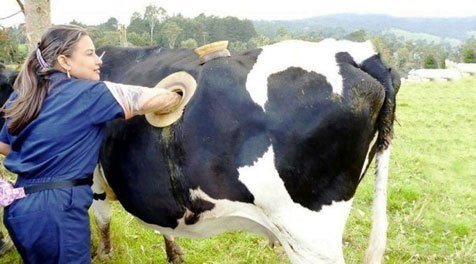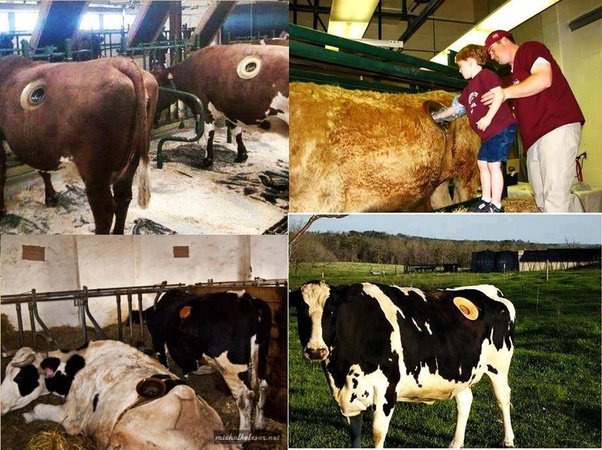There is a common veterinary practice called ruminotomy, which involves piercing the back of cows to leave an open wound large enough to fit a human arm.  These cows are called fistulated cows, and the removal of a piece of their abdomen to explore their stomachs has been a common practice for some experimenters and is even done in some veterinary schools, as pointed out by the animal organization PETA.
These cows are called fistulated cows, and the removal of a piece of their abdomen to explore their stomachs has been a common practice for some experimenters and is even done in some veterinary schools, as pointed out by the animal organization PETA.
To install it, a gap of 20 centimeters in diameter is opened and a prosthesis similar to the cap of a fuel tank is placed, which does not allow the wound to close. This insertion requires surgery and a postoperative period of between 4 and 6 weeks.
 It works as a window for farmers to directly see the cow's stomach and analyze its contents. The main purposes for which these devices are installed are purely commercial.
It works as a window for farmers to directly see the cow's stomach and analyze its contents. The main purposes for which these devices are installed are purely commercial.
In fact, PETA denounced in 2016 that this procedure does not take into account the suffering of the animal and is carried out only to increase the yield of the production.
The animal organisation has reported on numerous occasions that microbes in the stomach of cows are studied and sometimes transferred to other animals. They explain that although some researchers claim that this transfer can be good, the procedure benefits the production lines of the meat and dairy industries. 
Congratulations @alexisfigueroa! You have completed the following achievement on the Steem blockchain and have been rewarded with new badge(s) :
You can view your badges on your Steem Board and compare to others on the Steem Ranking
If you no longer want to receive notifications, reply to this comment with the word
STOPTo support your work, I also upvoted your post!
Vote for @Steemitboard as a witness to get one more award and increased upvotes!